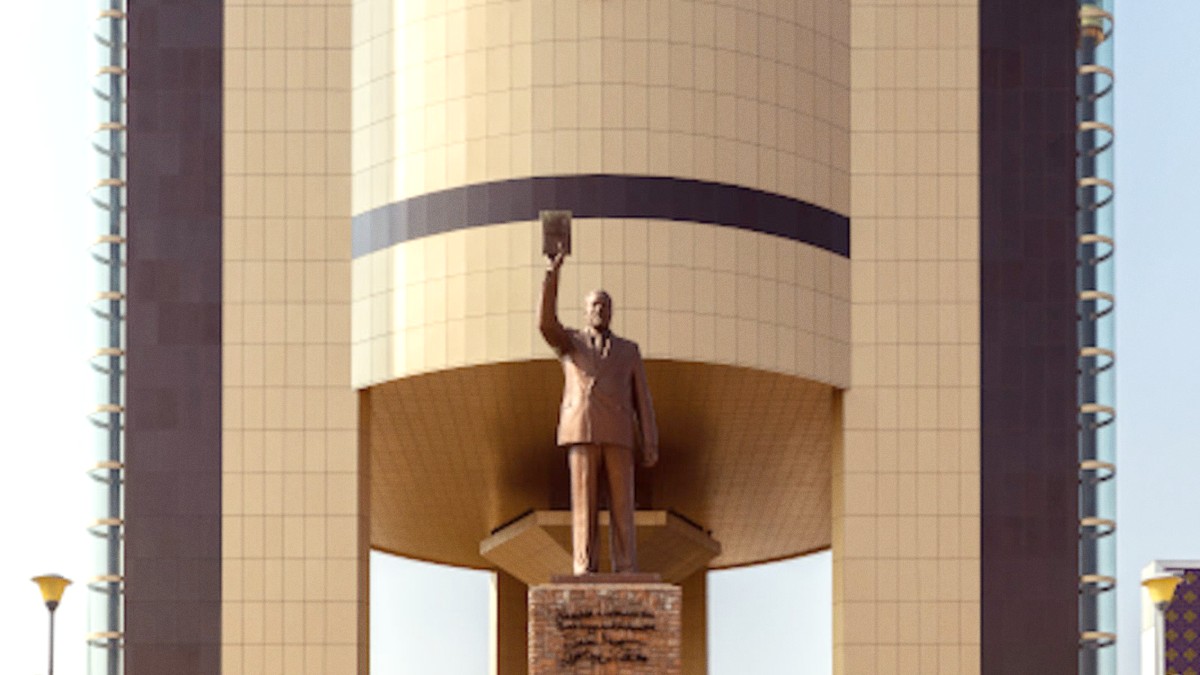
Western Namibia, Namibia
Swakopmund's skyline and streetscapes present several prominent landmarks that speak to its rich history and coastal identity.
The town's origins as a port and its German colonial past are visible in these enduring structures.
Stroll beyond the immediate central area of the promenade for quieter stretches of beach.
The entire central business district and older residential areas function as a living historical district, renowned for well-preserved German colonial architecture.
German Evangelical Lutheran Church (Deutsche Evangelisch-Lutherische Kirche), built in 1909, is a prominent example of neo-Baroque architecture.
Marine Memorial commemorates German sailors lost at sea. The Bridge of Sighs (Old Prison) carries historical weight.
The Old German military barracks (Kaserne) and the historical railway station illustrate Swakopmund's past under German rule.
No archaeological sites or ruins exist directly within Swakopmund.
Swakopmund's location at the edge of the Namib Desert and the Atlantic Ocean delivers access to unique natural wonders and abundant wildlife.
Located between Swakopmund and Walvis Bay, this massive, accessible sand dune presents panoramic views of the surrounding desert landscape from its summit. Popular for sandboarding and quad biking.
Situated east of Swakopmund, this desolate and otherworldly landscape is characterized by deeply eroded badlands, resembling a lunar surface. It delivers striking views and a sense of vast emptiness.
A self-drive route through the Namib Desert east of Swakopmund, showing ancient Welwitschia mirabilis plants, some over 1,500 years old. These unique plants are endemic to the Namib Desert.
A Ramsar site (wetland of international importance) south of Swakopmund. A haven for thousands of flamingos, pelicans, and various migratory birds, delivering superb bird-watching opportunities.
This peninsula hosts a very large Cape fur seal colony and a historic lighthouse. Boat tours give close encounters with seals and often dolphins.
The beaches feature cold Atlantic water and strong currents, generally unsuitable for swimming but excellent for long walks and photography.
Rössing Mountain, home to one of the world's largest open-pit uranium mines, is visible in the distance. The region around Swakopmund is known for rich deposits of crystals and semi-precious stones, displayed at the Kristall Galerie.
Palm Beach offers a pleasant recreational area. Swakopmund lies within the vast National West Coast Recreation Area and Dorob National Park, protecting fragile coastal desert ecosystems, including dune belts and habitats.
The Swakop River is ephemeral (usually dry), but its course has sculpted the remarkable Moon Landscape. Its main contribution is geological formation rather than active water use.
Beyond the well-known attractions, Swakopmund and its surroundings hold less-visited places that deliver unique perspectives.
The blend of desert, ocean, and colonial architecture presents endless photographic opportunities. Be aware of the strong coastal fog in the mornings, which creates a moody atmosphere but may reduce visibility.
Explore the unique natural formations for captivating images:
Capture the unique interaction between the desert and the Atlantic Ocean:
For encounters with abundant marine and desert wildlife:
Capture the essence of Swakopmund's past and present:
To make the most of your sightseeing adventures, remember these practical tips.
Always check current operating hours and any entry fees for attractions, as these may change seasonally.
Consider local guides for desert tours or township visits for insight and safer exploration.